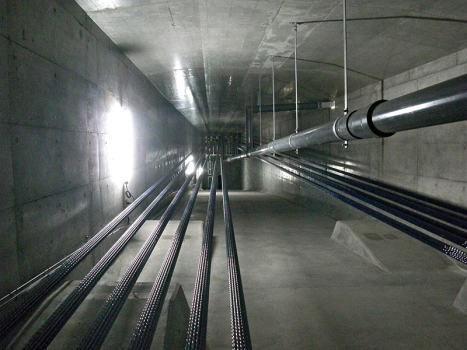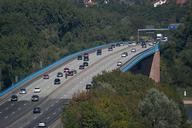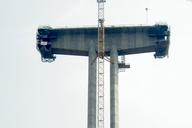Strand tendons stabilize Sanagawa Bridge, Japan's fourth highest bridge
The Sanagawa Bridge is part of the New Tomei Expressway and spans the Sanagawa River in the city of Toyokawa. The design-build contract for the bridge also included the technical proposal for the construction of the superstructure and substructure, including the earthwork. Neither the span lengths nor the type of bridge structure were detailed in the bid invitation and therefore, each could be determined flexibly by the companies.
Kajima Corporation, Japan, suggested a 6-span continuous rigid frame box girder made of prestressed reinforced concrete. Due to topographical conditions, the bridge piers are up to 89 m high. They consist of high-strength reinforced concrete with a design strength of 50 N/mm² and high-strength reinforced steel with a yield strength of 685 N/mm², which ensures improved seismic resistance and durability.
700 m in length, with a maximum single span of 142 m
The bridge measures roughly 700 m in length, with a maximum single span of 142 m. The bridge is the fourth highest in Japan and the highest on the New Tomei Expressway. The post-tensioning method used for the bridge is combined prestressing with unbonded external and bonded internal tendons. The Type 12S15.2MA DYWIDAG Strand Post-Tensioning System with bare strand was used for a portion of the continuous tendons and for all cantilever tendons, which were installed as bonded internal tendons. The remaining continuous tendons consist of external Type 19S15.2MC DYWIDAG Strand Tendons with epoxy coated and filled strand. The transverse post- tensioning of the deck slabs was carried out using pre-grouted Type 1S21.8 Prestressing Strand.
References
Structure Types
- About this
data sheet - Product-ID
7362 - Published on:
28/04/2016 - Last updated on:
17/11/2021







